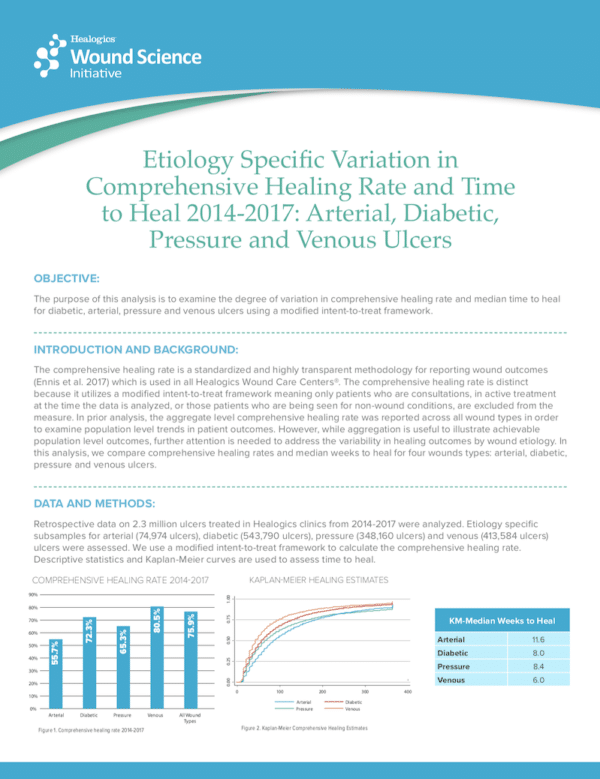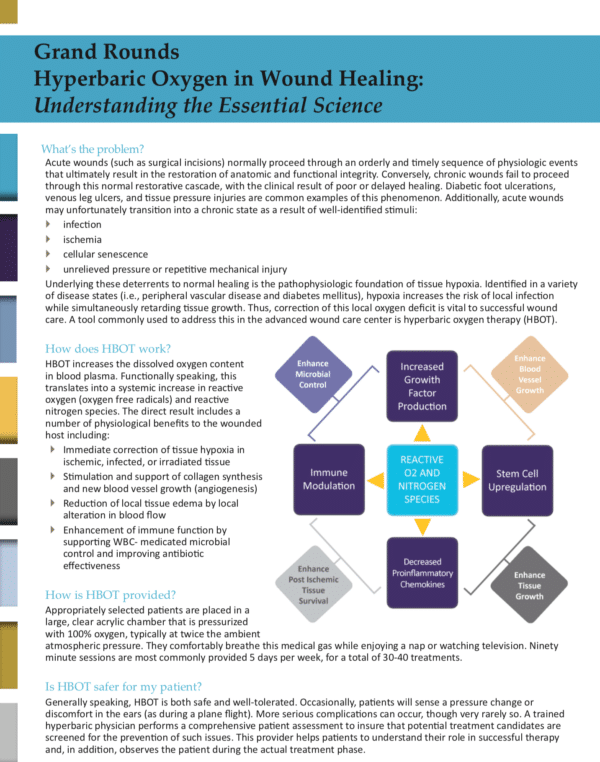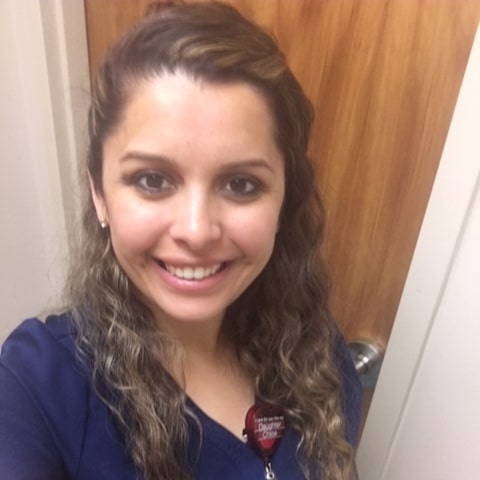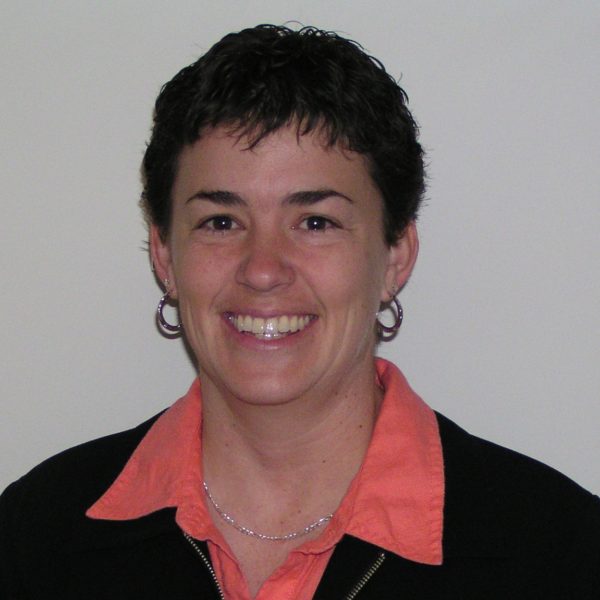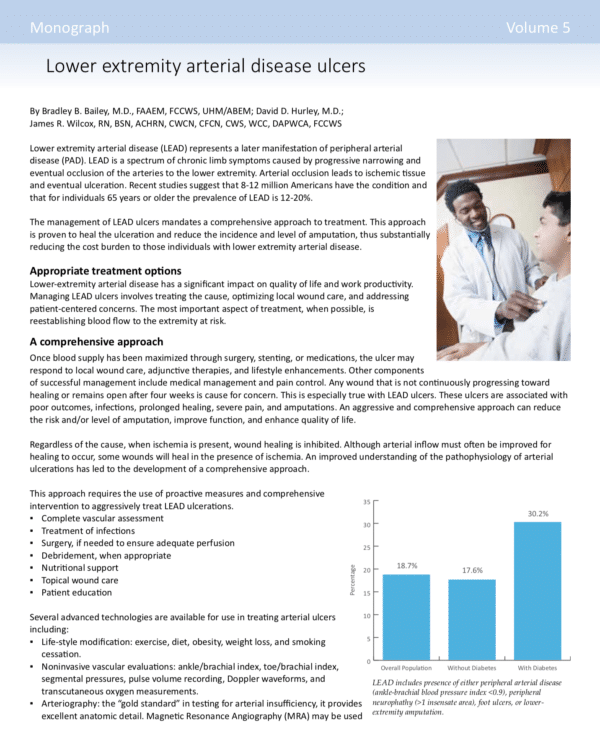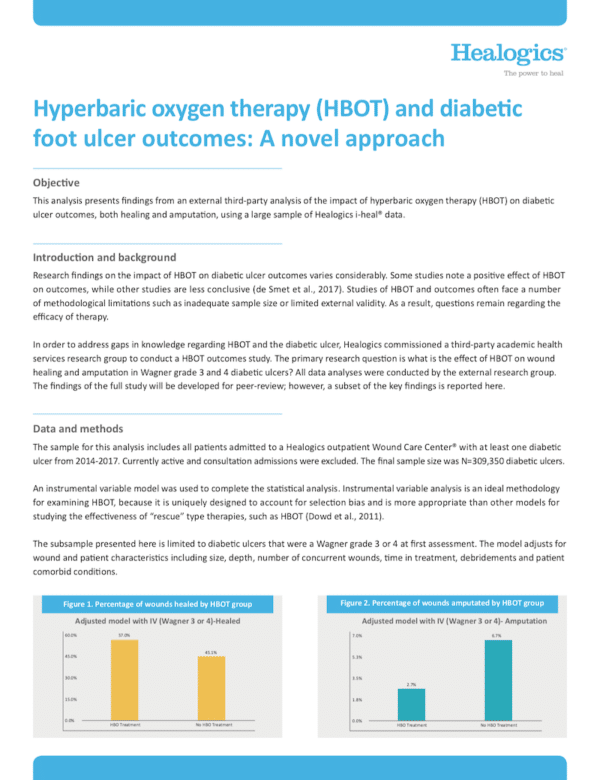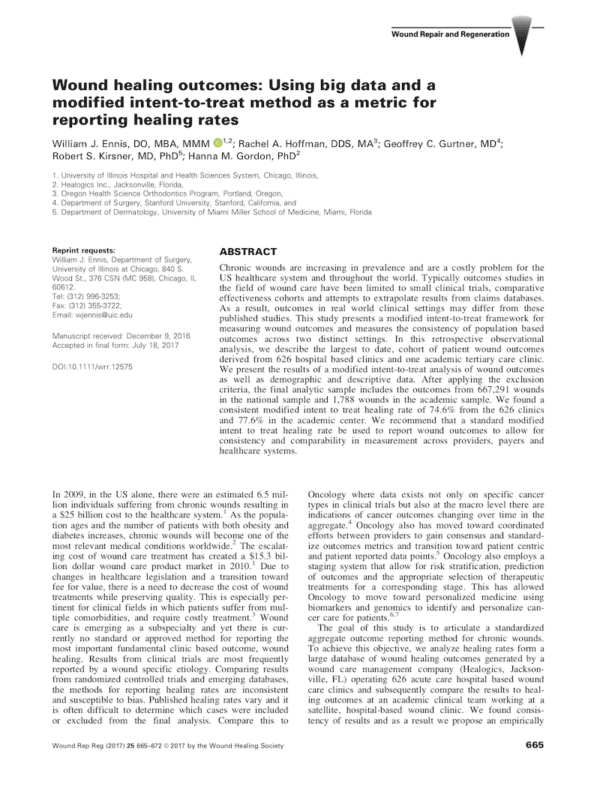The purpose of this analysis is to examine the degree of variation in comprehensive healing rate and median time to heal for diabetic, arterial, pressure and venous ulcers using a modified intent-to-treat framework.
Learn More
HBOT increases the dissolved oxygen content in blood plasma. Functionally speaking, this translates into a systemic increase in reactive oxygen (oxygen free radicals) and reactive nitrogen species. The direct result includes a number of physiological benefits to the wounded host.
Learn More
"Healogics has helped me develop as a leader and has given me guidance on new techniques to handle different staff based on their individual learning needs."
Learn More
"My greatest reward of working at Healogics is having the ability to help people…from my collaborative efforts with colleagues and our hospital partners during the development and implementation phase of opening a new Wound Care Center to ultimately helping our patients."
Learn More
The management of LEAD ulcers mandates a comprehensive approach to treatment. This approach is proven to heal the ulceration and reduce the incidence and level of amputation, thus substantially reducing the cost burden to those individuals with lower extremity arterial disease.
Learn More
"In my 14 years at Healogics, I’ve worked in 6 roles and relocated twice. I’m proof of Healogics commitment to train up their employees and provide opportunities for growth."
Learn More
This analysis presents findings from an external third-party analysis of the impact of hyperbaric oxygen therapy (HBO) on diabetic ulcer outcomes, both healing and amputation, using a large sample of Healogics i-heal® data.
Learn More
Quality of Care Would you send your mother or father to your wound care center? How many of your patients are getting healed and in how long? Efficiency, Cost and Utilization Is your wound center profitable? How productive is your current staff compared to national benchmarks? Are you using wound care supplies and consumables effectively?…
Learn More
This study presents a modified intent-to-treat framework for measuring wound outcomes and measures the consistency of population based outcomes across two distinct settings. In this retrospective observational analysis, we describe the largest to date, cohort of patient wound outcomes derived from 626 hospital based clinics and one academic tertiary care clinic. We present the results of a modified intent-to-treat analysis of wound outcomes as well as demographic and descriptive data.
Learn More
"Healogics has taught me how to provide wound care at the highest level where I can achieve the best outcomes. I enjoy getting to know my patients and helping to educate them on their wounds and ways to facilitate healing."
Learn More

